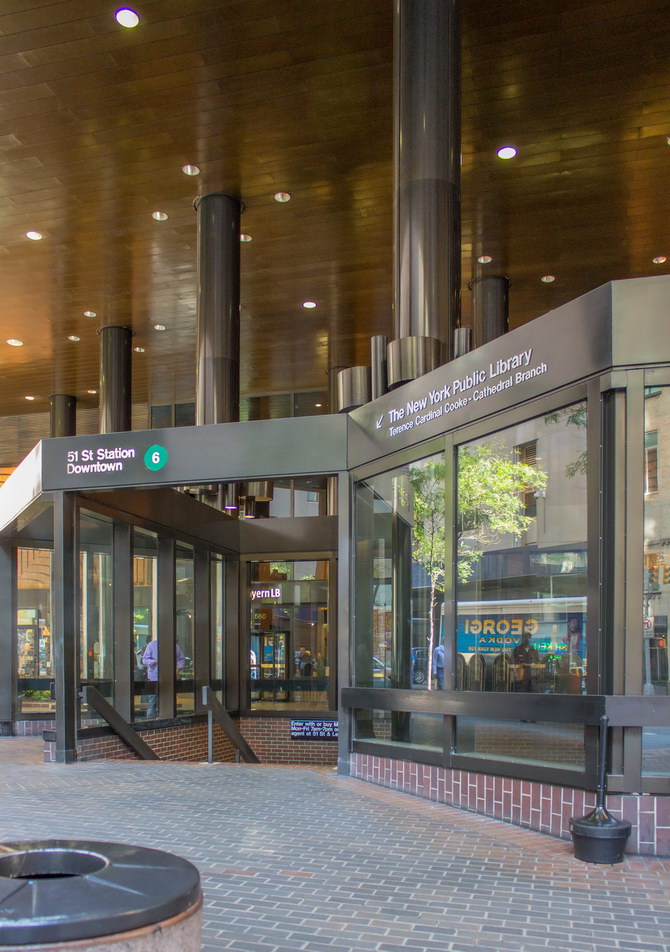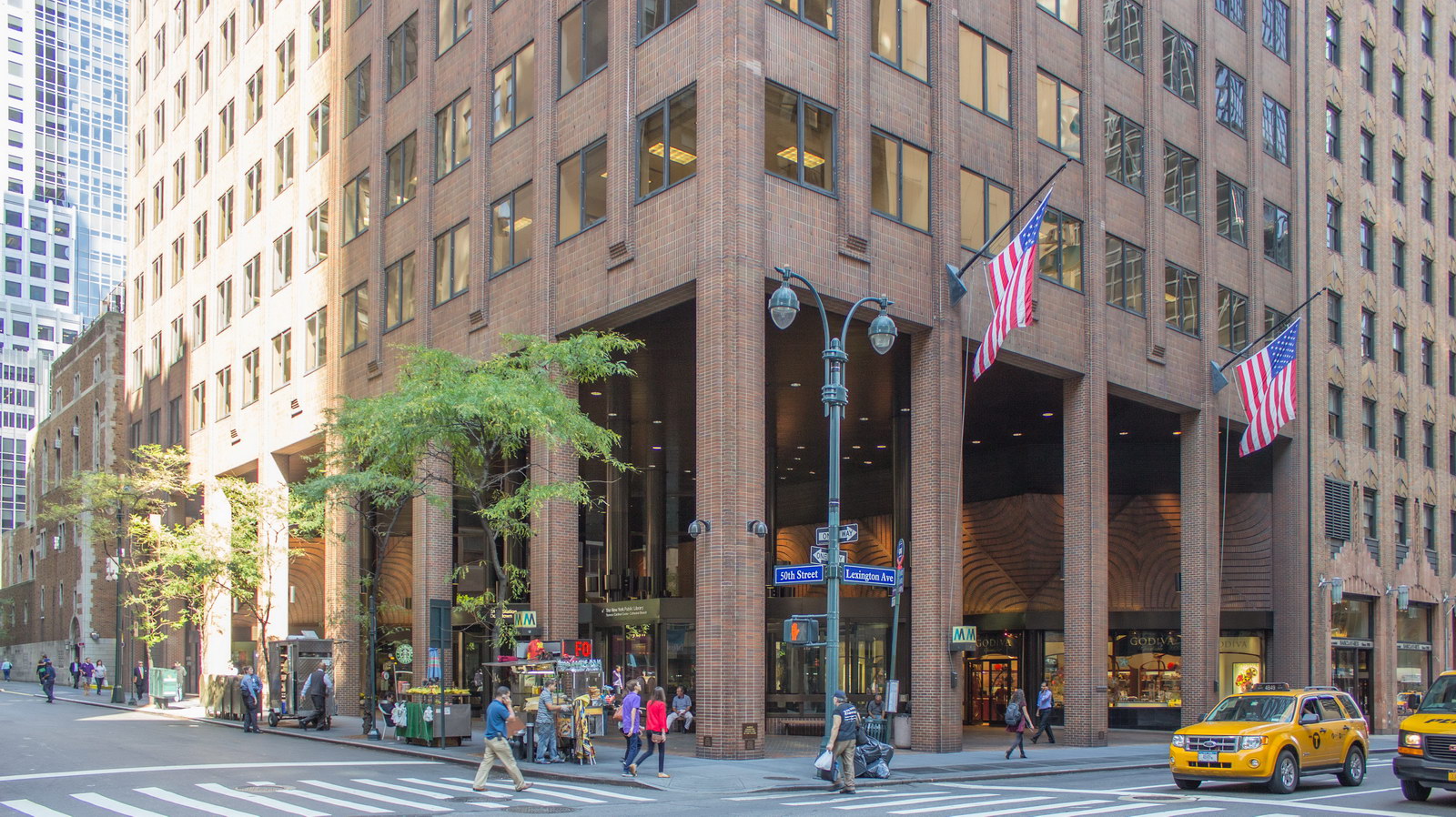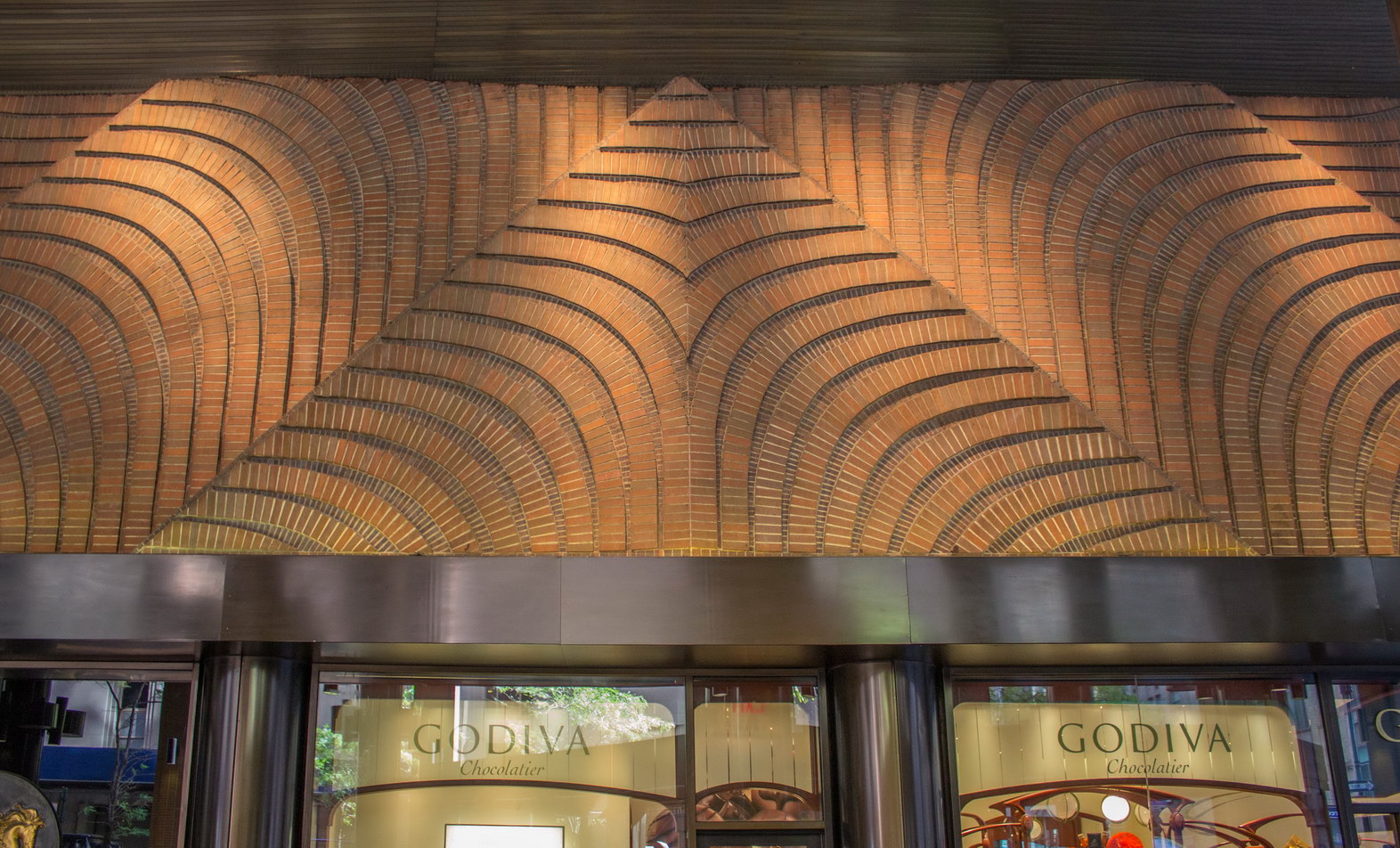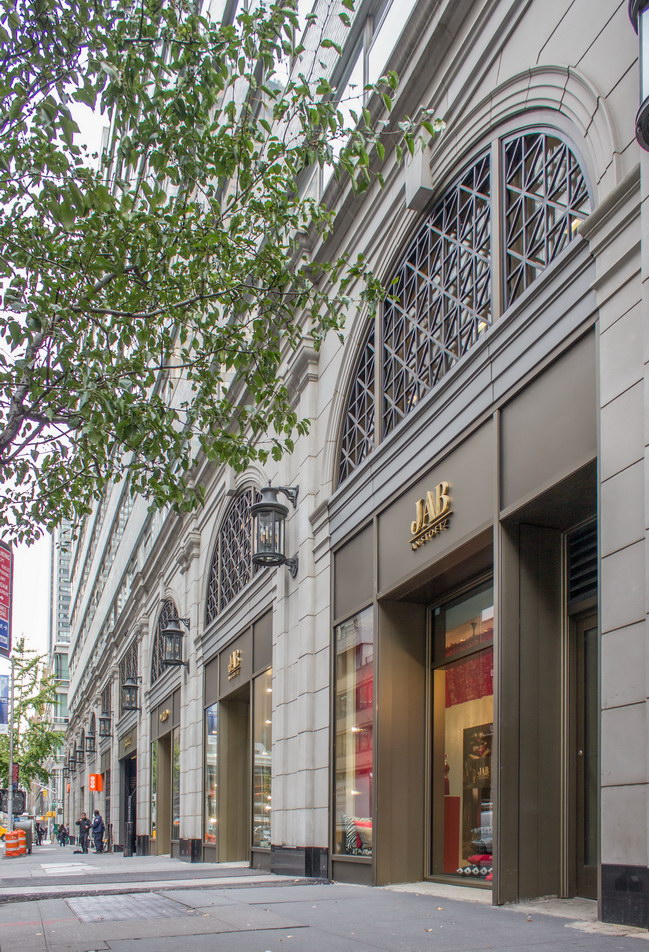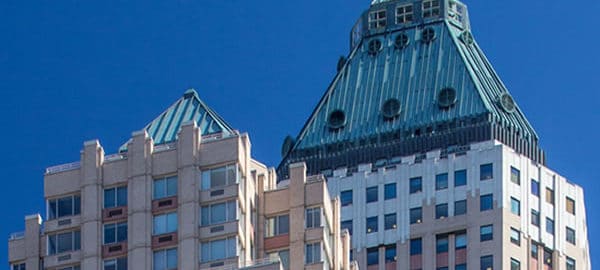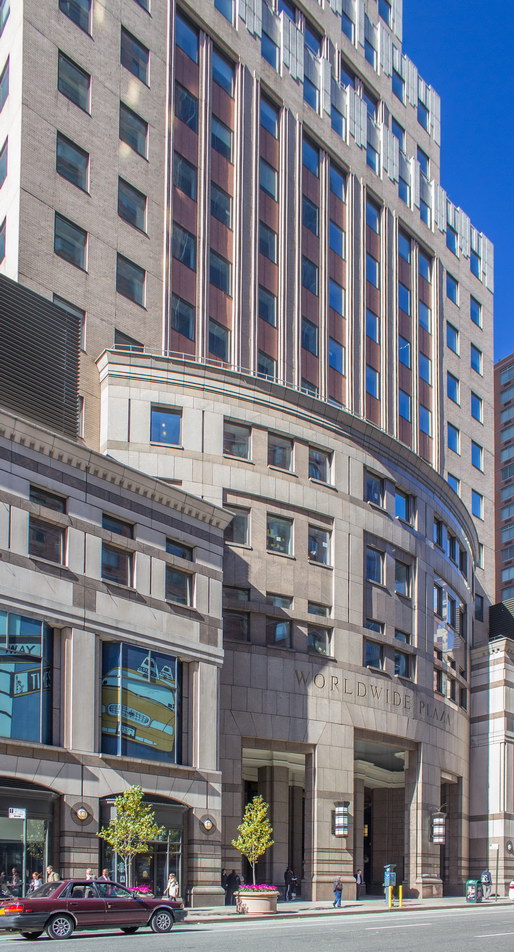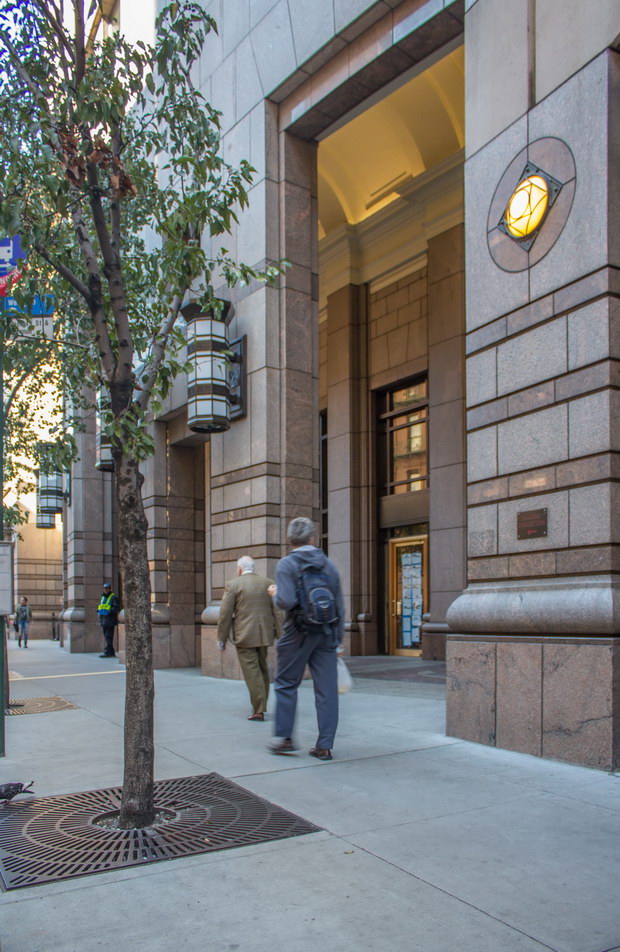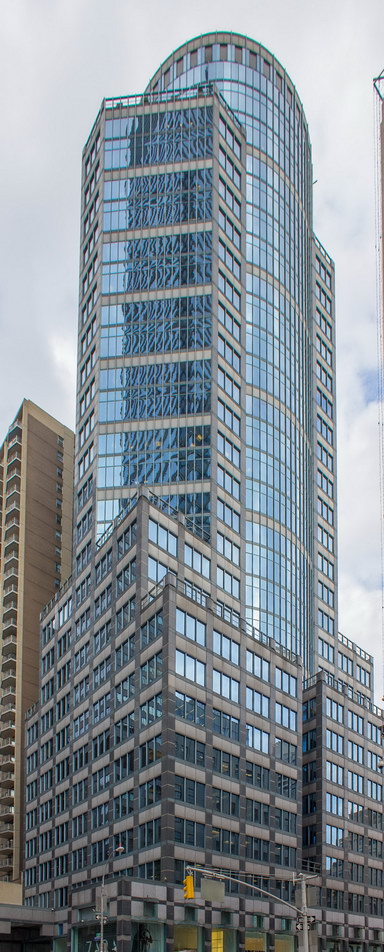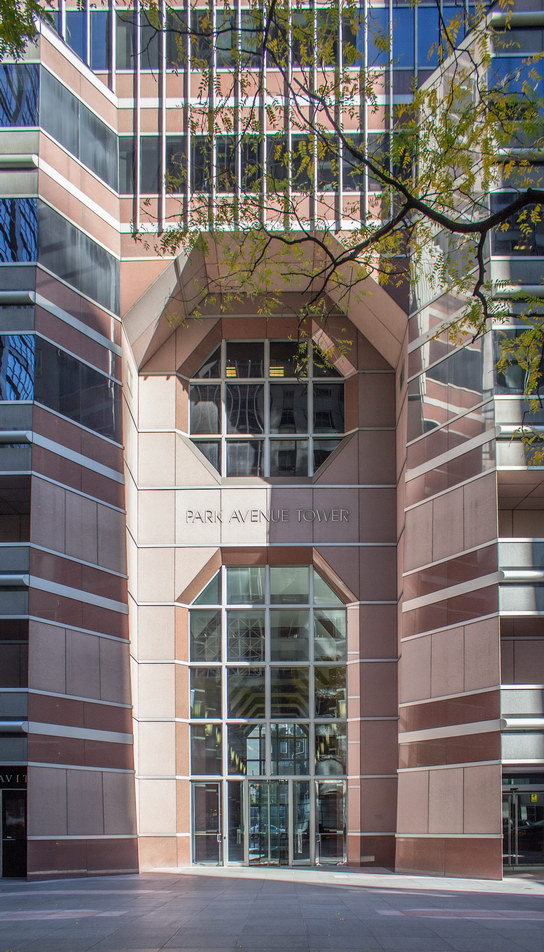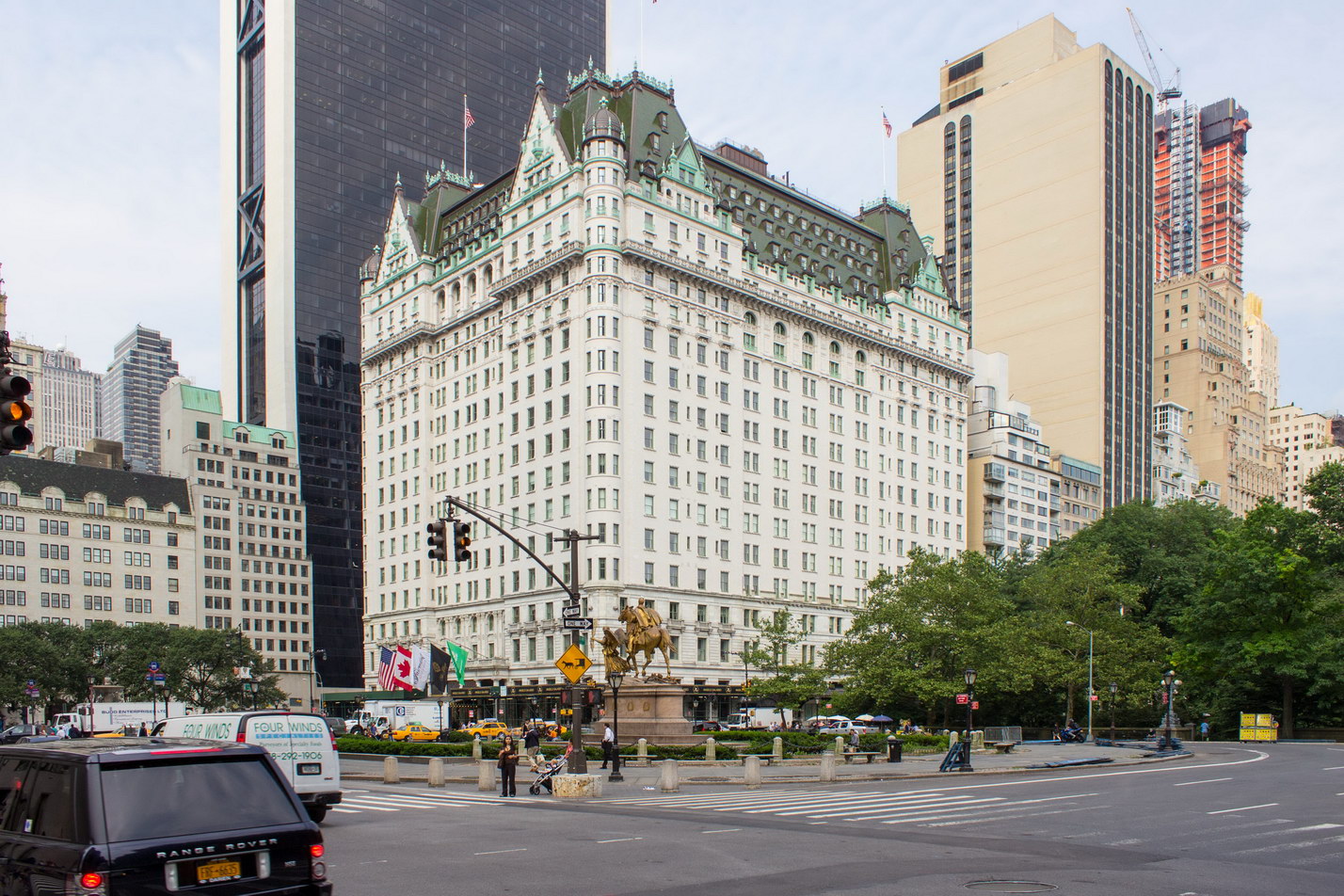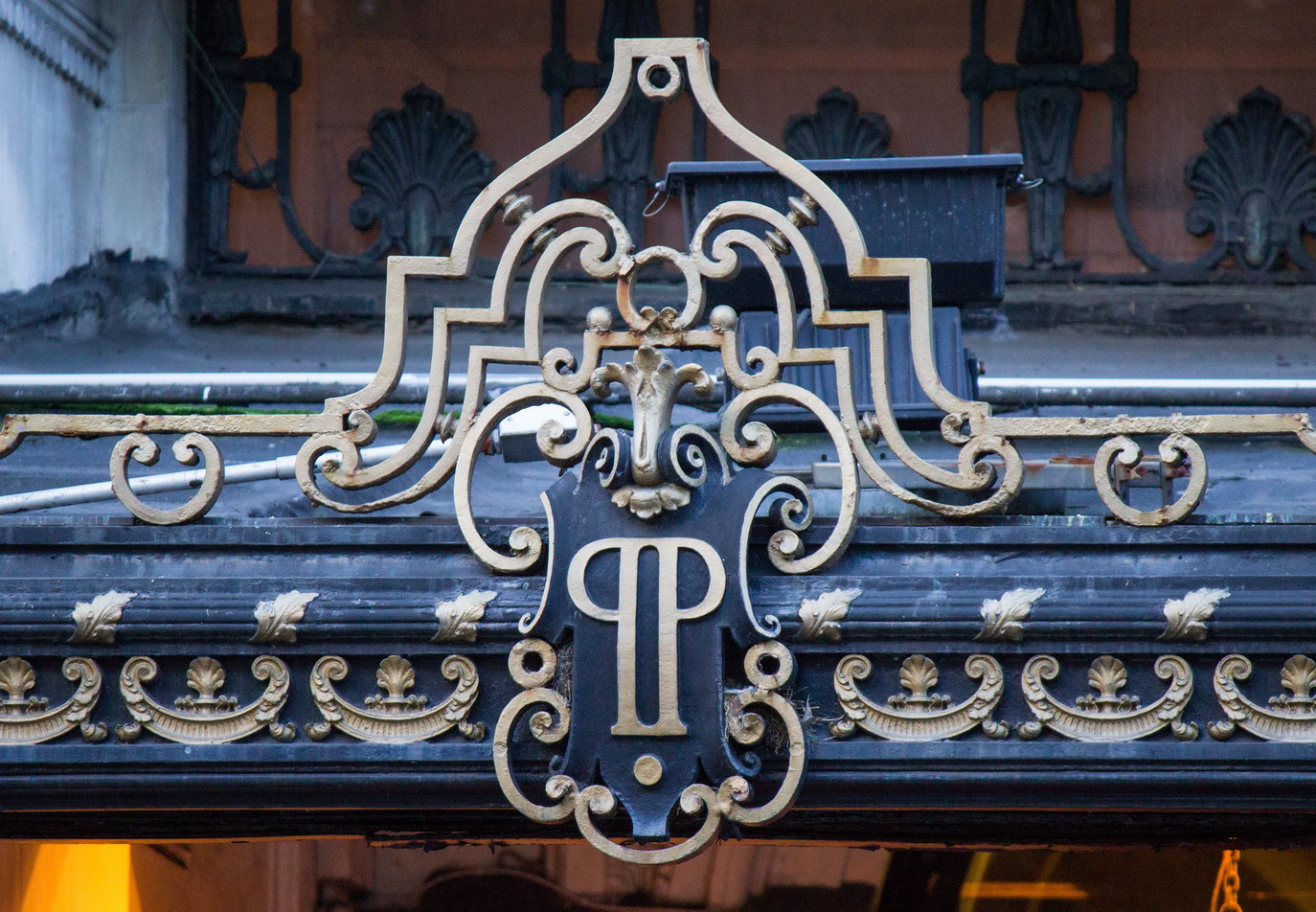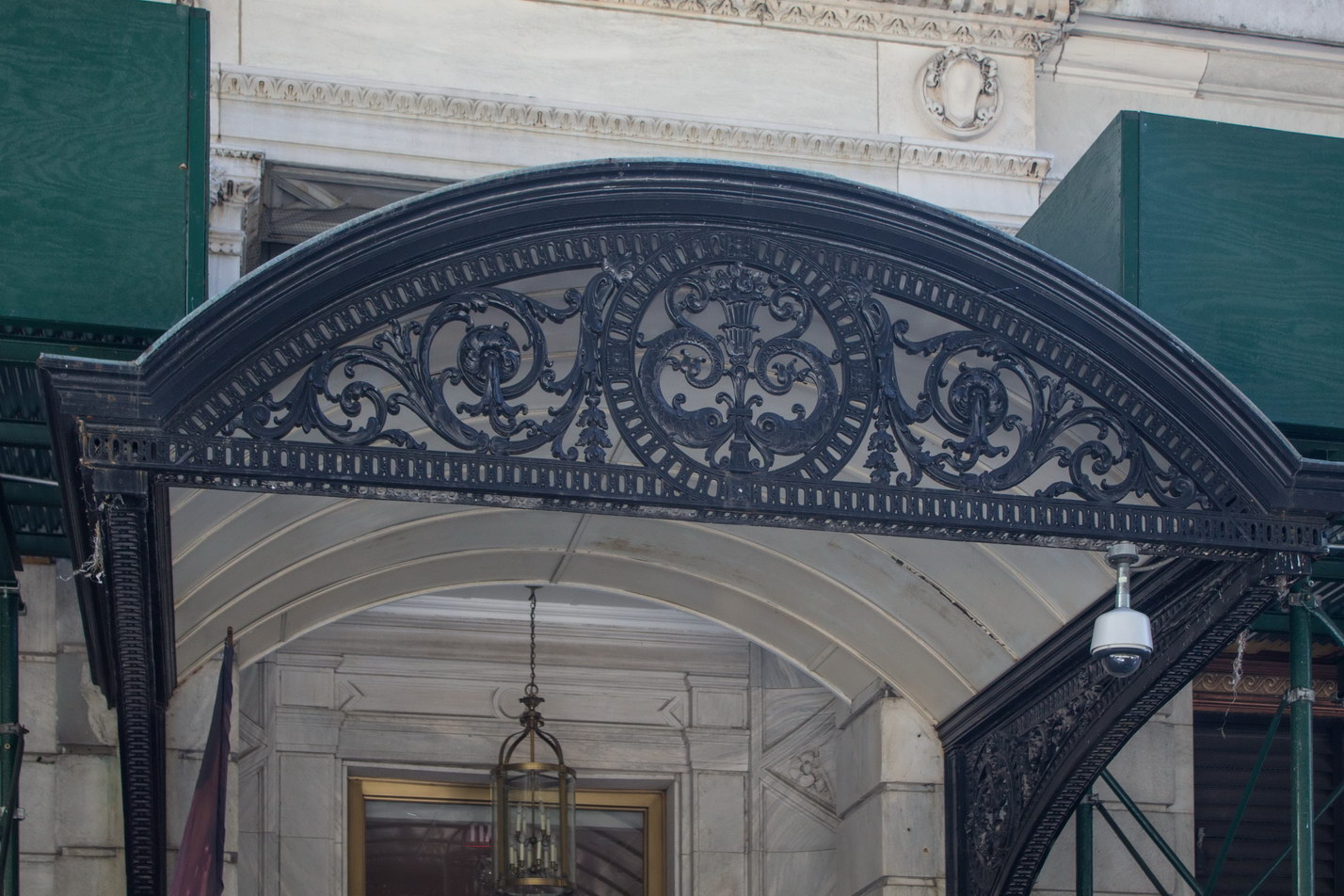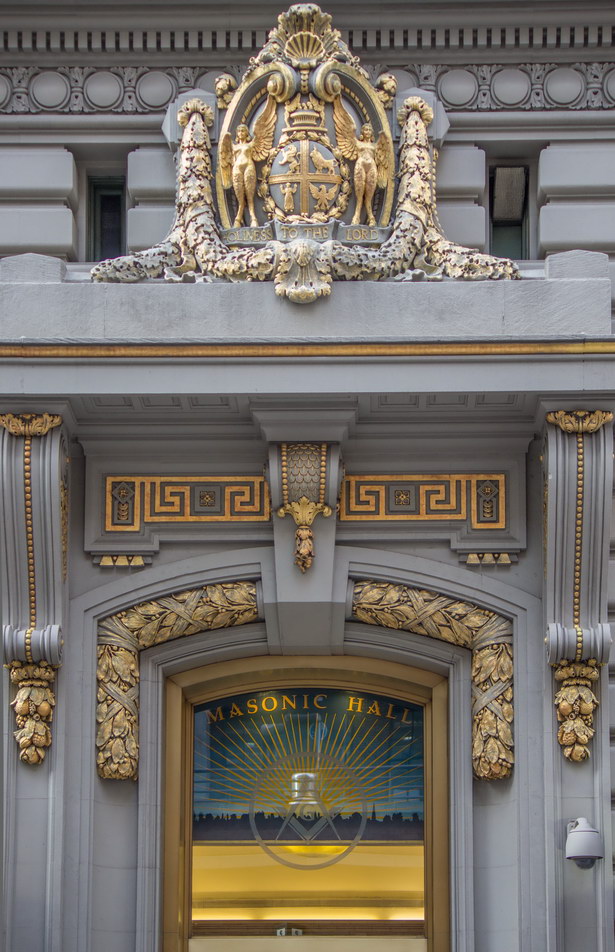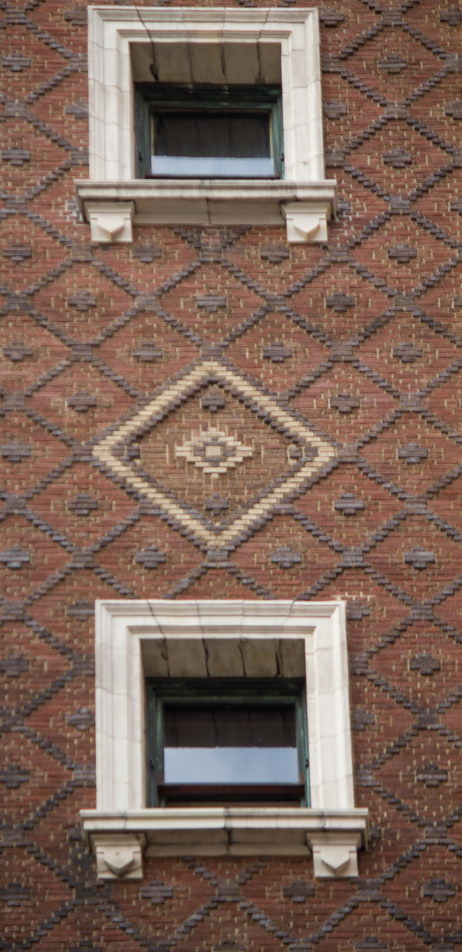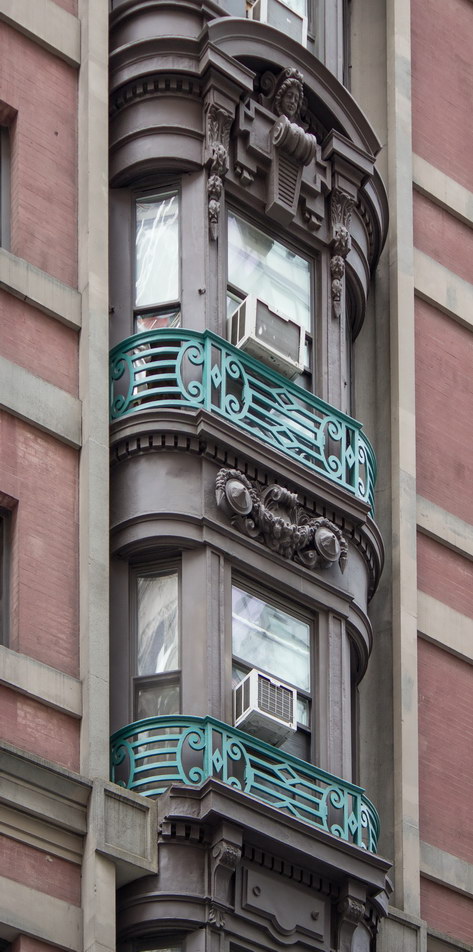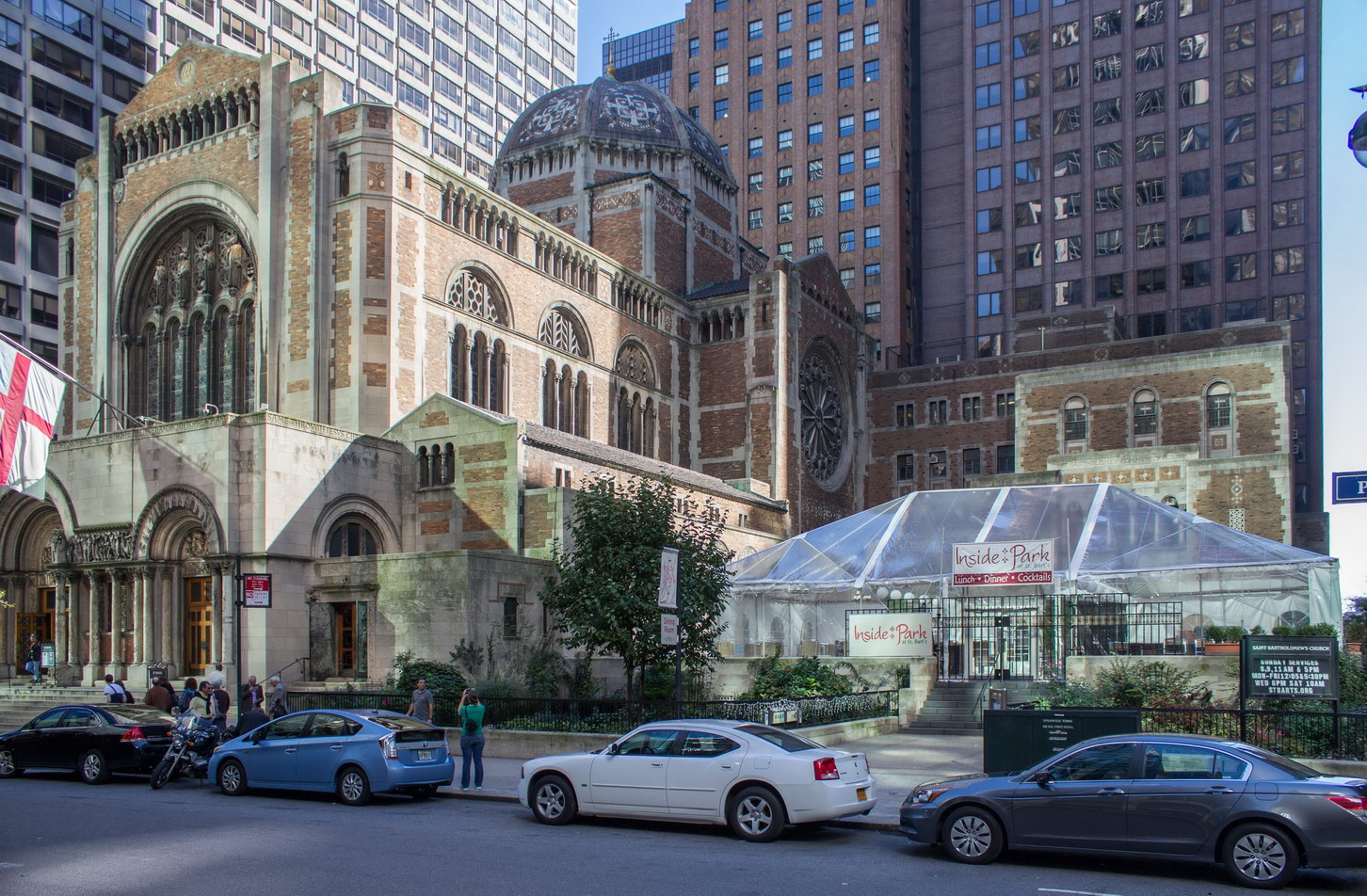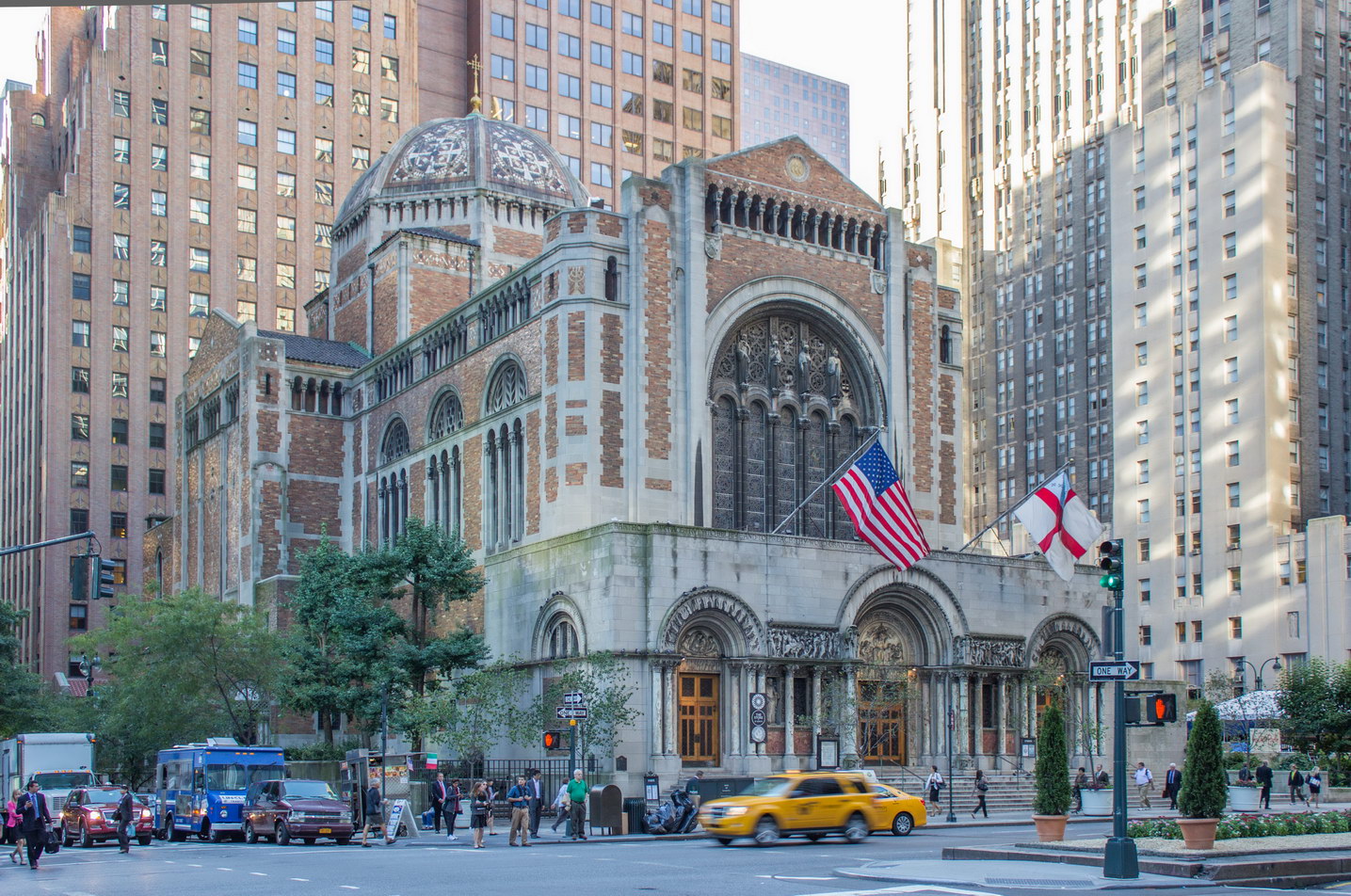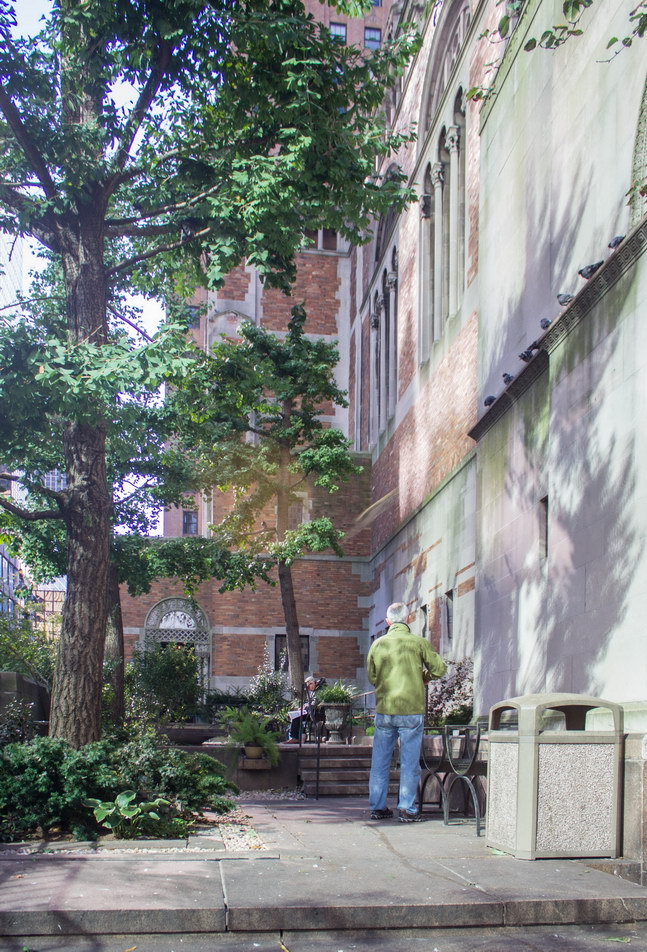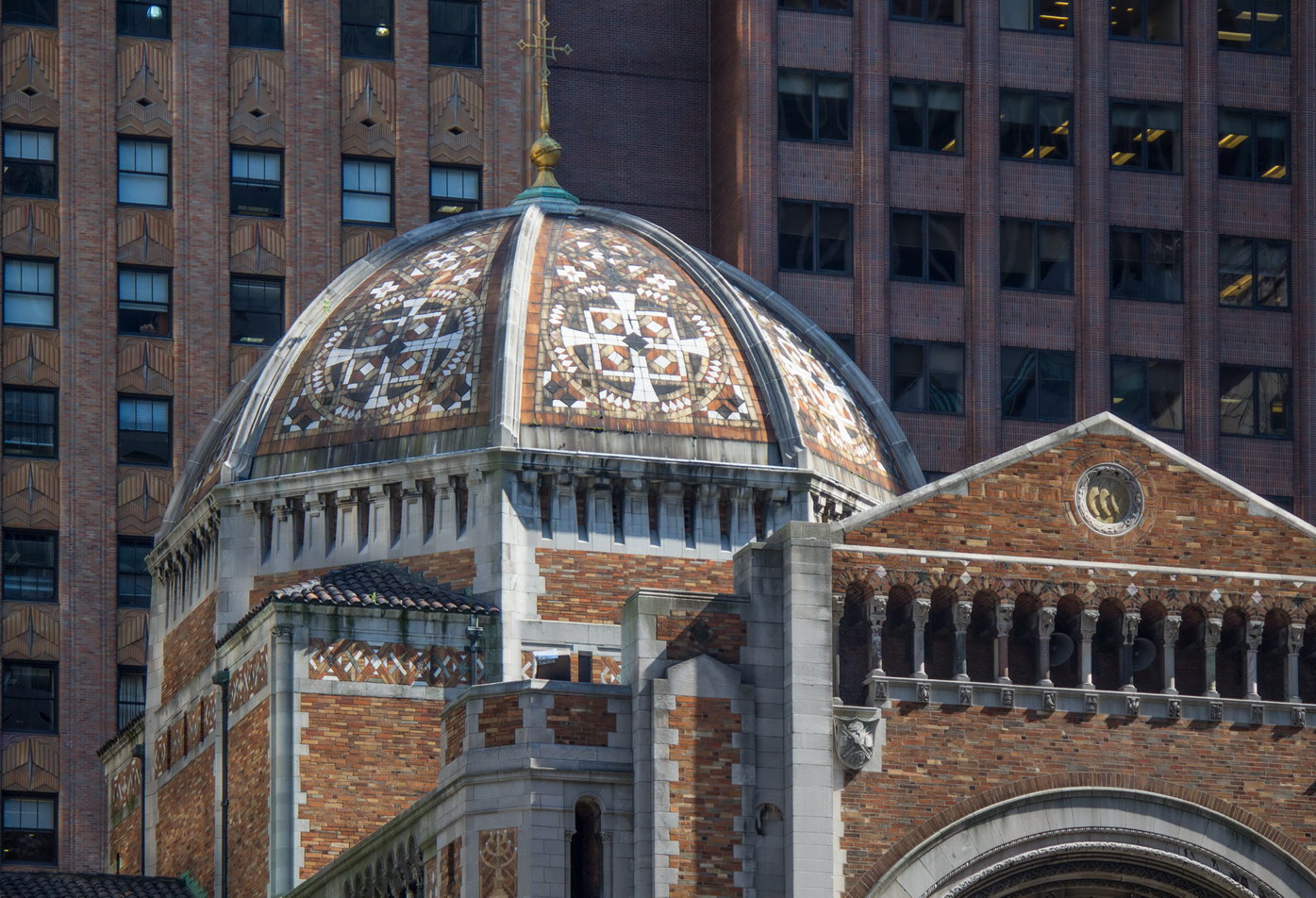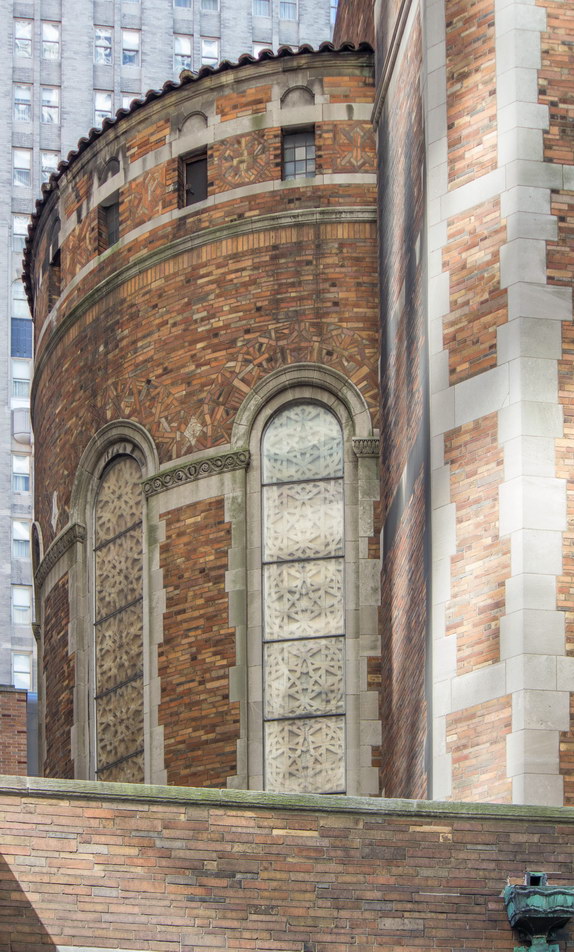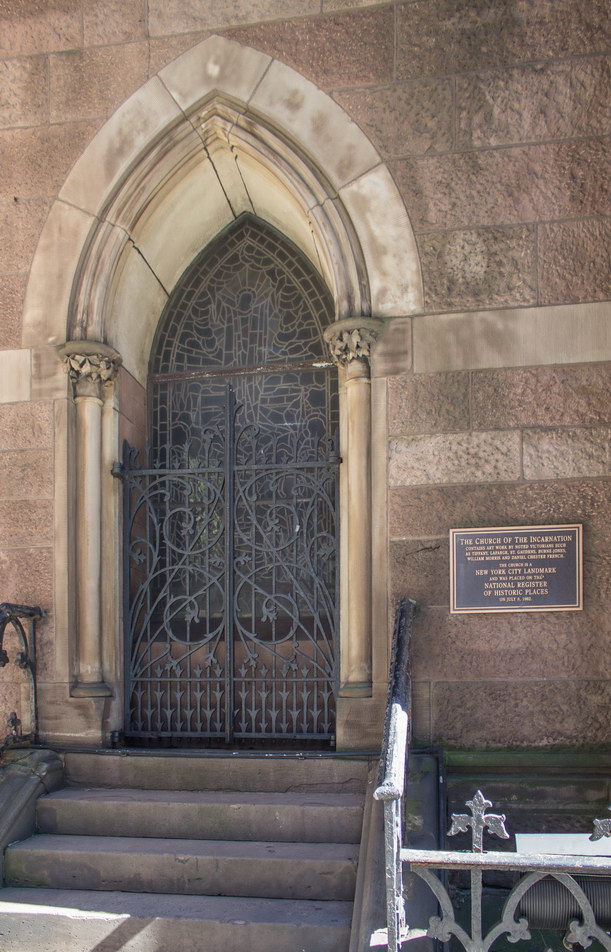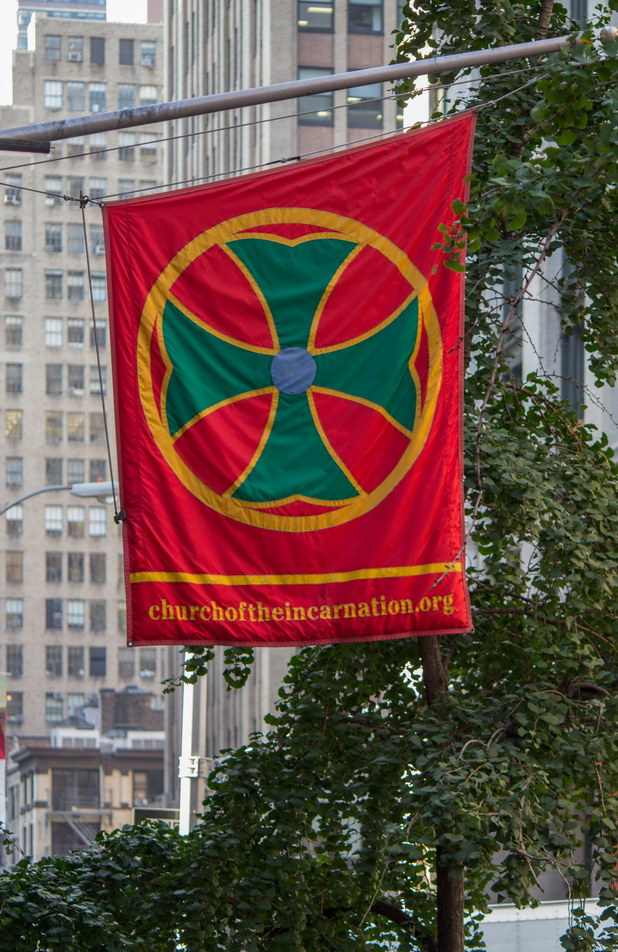More often than not, architects strive to make their creations stand out. The Eggers Partnership was asked to make 560 Lexington Avenue blend in. Their creation is both outstanding and it blends in with landmark neighbors General Electric Building and St. Bartholomew’s Church.
The 22-story red brick block picks up the colors of its neighbors, the restrained design doesn’t compete with next-door’s towering Art Deco or St. Bart’s Romanesque.
560 Lex takes the place of a school associated with St. Patrick’s Cathedral (two blocks away); a reminder is the Terence Cardinal Cooke – Cathedral Library in the basement level. The library (and subway, below that) have their own entry kiosk built into the two-story arcade that forms the building’s base. The walls above the shops are textured with a “brick sculpture” by Aleksandra Kasuba.
560 Lexington Avenue Vital Statistics
- Location: 560 Lexington Avenue at E 50th Street
- Year completed: 1981
- Architect: Eggers Partnership
- Floors: 22
- Style: Modern


